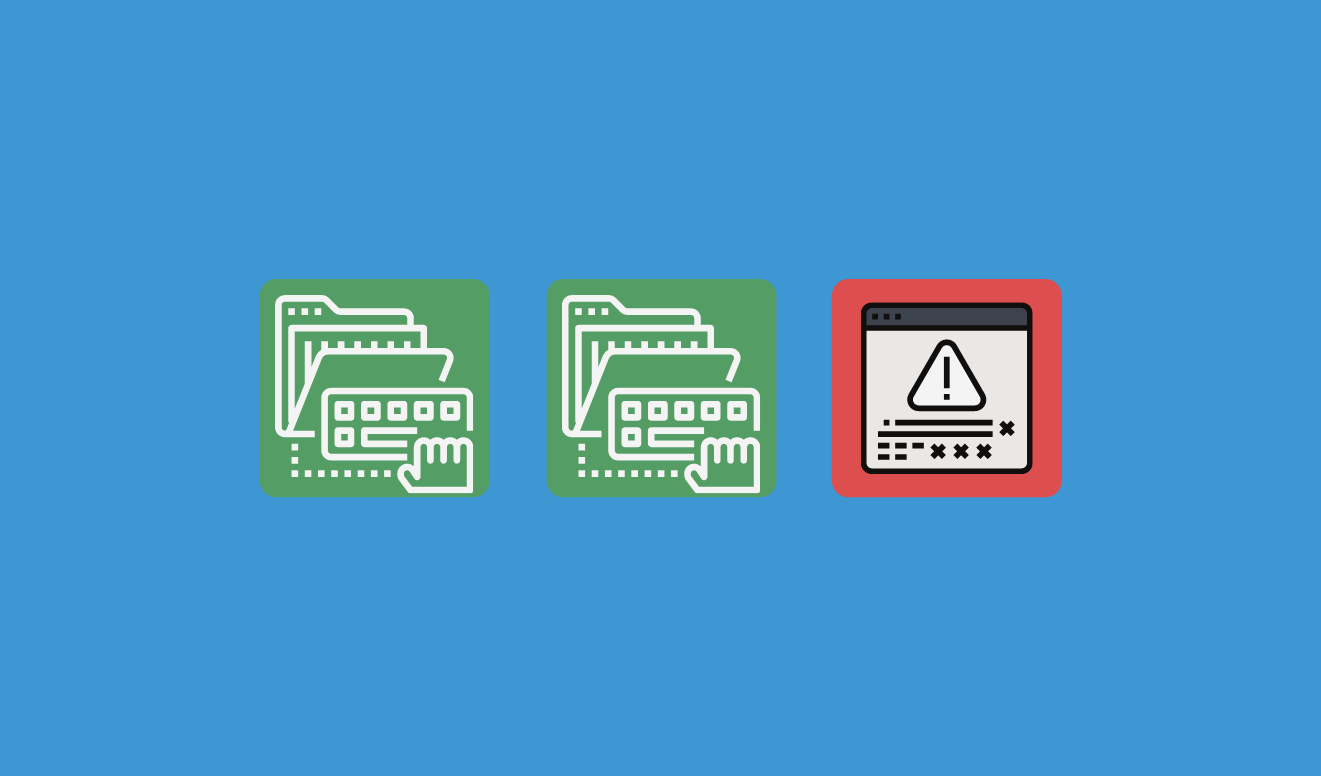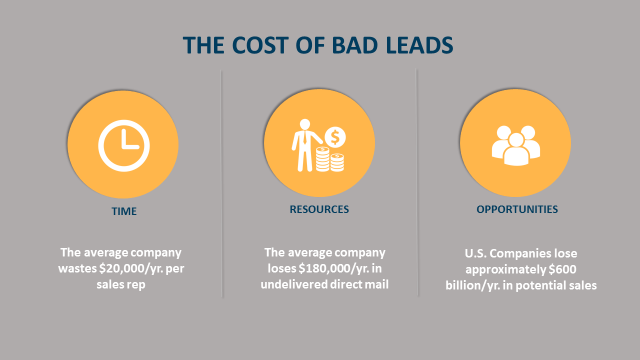5 CRM Best Practices You Can Apply Today

Many professionals struggle to find the time to learn to optimize their CRM database. Merely investing in and migrating to a new CRM tool is not the end-all solution.
You can have the most advanced CRM tool on the market, but without a workflow, it’s not more useful than an Excel sheet. Without following a strategy, you just have another place to store messy data.
But if you adopt these CRM best practices, then any CRM that you use will be powerful.
Want to see how healthy you CRM data is? Request your free data quality check.
What is CRM data?
CRM data is all the contact information that you store in your customer relationship management software. More data isn't necessarily better, and the quality of your customer data should be the priority. There are four main types of data that you will have in your CRM:
Basic data | Interaction data | Behavioral data | Attitudinal data |
|---|---|---|---|
First and last names | Page views | Free trial signups | Reviews |
Email addresses | Social media shares | User account logins | Purchase criteria |
Phone numbers | Email inquiries | Utilization of features | Complaints |
Job title | Lead magnet downloads | Deactivations | Customer satisfaction surveys |
Gender | Mobile app interactions | Subscription downgrades | Support ticket comments |
Income | Information requests | Previous purchases | Product desirability |
This customer information will enable email segmentation, enabling you to target your marketing campaigns accordingly. Maintaining your CRM data and keeping it clean is essential if you want to get the most out of your customer relationship management software. For that, you need a data management plan.

CRM Best practices for creating a data management plan
Bad data quality is the plague of most CRMs and almost always results from a lack of data management. Collecting inaccurate data or contacts with missing fields leads to a messy and unusable CRM database. As employees attempt to fix the false records and find missing information, they waste hours (sometimes hundreds) of salaried time. According to IBM, bad data costs the US Economy $3.1 trillion per year!
Your data management plan will include guidelines for how to enter new data and maintain your current records. You should have clear examples for every possible scenario that your marketing and sales team can reference whenever needed to ensure consistency across data entry.

(Source)
What you need to consider when creating CRM systems and practices
According to marketing data expert Chantelle Marcelle, "the best way to tackle data management is by first identifying the ecosystem. What are the data sources, who has access to it, and what are the current processes (if there are any)?" This information is vital when creating CRM solutions and practices that are relevant to your business model.
She then recommends figuring out who the company stakeholders are that need to be involved in conversations about managing sales leads moving forward. It should ideally involve someone from each department that has access to or contributes to the data. Those stakeholders can communicate important information about processes or concerns to ensure the entire team is aware and onboard.
Once you've considered all the variables mentioned, you can begin to customize data workflows for your marketing teams and sales reps.
Don't miss our interview with CRM expert Jeroen Corthout about how to build the ultimate CRM strategy and find out why your current strategy isn’t working.
Create rules and processes for CRM data entry
A significant part of your data management plan needs to center around data entry. You need to create strict rules around formatting to ensure that everything is entered in the exact same way. This is of high importance for manual data entry and uploading any lists from spreadsheets. Also, you need to create processes around duplicates, including how to reduce duplication and what to do when staff members come across a duplicate record.
"Every good CRM should have a record sunset policy. A documented approach to clearing out or suppressing old records (unsubs, bounced, old no activity records). This is just as important as maintaining your clean, active segments.”
Nicole Pereira
CEO OF REMOTISH
If you have been working with multiple CRM platforms like HubSpot, Salesforce, or any other marketing automation platforms, then it's a good idea to migrate to a single platform. That way, you can focus your data management and cleaning processes on one centralized hub instead of ending up with multiple unclean lists.
Here are some CRM best practices that you can implement to help mitigate the risks of duplicate entries:
1. Search for contacts before adding them
Each time a staff member adds a new contact, they should always search the database for them first to ensure they aren’t already in there.
2. Try partial word searches
It's important to note that you may search for a contact and not find them, but they might still be in your CRM database. A contact may have been misspelled; for example, Hayley could have been entered as Hailey. In that case, searching for Hayley will deliver no results.
Establish rules around deduplication in your CRM data

(Source)
You will inevitably end up with duplicate entries in your CRM. It's essential to establish rules around deduplication so that your employees know exactly what to do when they come across a duplicate.
Some best practices when dealing with duplicates in your CRM include:
1. Do your research before taking action
Before doing anything with the duplicate, staff should triple-check all the information so they can be sure that it is, in fact, a duplicate. Some personal and business names are very common and could actually be two separate entries.
2. Merge before deleting
If you find multiple entries for the same person, you should always merge the records first before deleting one. Contacts may have multiple phone numbers or email addresses, and consolidating into one entry means that you'll have all the information on the contact in a single listing.
3. If there's any doubt, ask the user who entered the contact
If you have any uncertainty around a specific contact, it's always best to ask the user who originally entered it for clarification.
Put CRM data naming protocols in place
One of the biggest culprits of bad data in your CRM is the many forms that each piece of data can take. You can reduce the risk of messy, disorganized entries by establishing data naming protocols for your staff to follow when entering data into your CRM. These could include:
1. Punctuation
The best practice to follow when it comes to punctuation is to avoid using it entirely. Punctuation can change the entire format of an entry, making it hard to find in your database. It's easier to set a “no punctuation” rule than for employees to remember where the punctuation is meant to go.
2. Spelling out numbers in text fields
When you include numbers in your CRM's text fields, the best practice is always to spell them out. If a field is solely for numbers, such as age or date, they can remain numbers. If the number is in an address, such as 8th street, it should be written as Eighth Street.
3. Set rules around abbreviations
Choose whether you want to use abbreviations in your CRM or avoid them entirely. Here are some examples of how different abbreviations might look:
Doctor | Dr. |
Corporation | Co./Corp. |
District of Columbia | D.C. |
Teaching English as a Second Language | TESL |
Chief Executive Officer | CEO |
Using automation in CRM data management
The purpose of CRMs is to make the way you manage data and customer interactions more efficient. CRM systems use many workflow automation features, which can help you optimize the way you manage your data. All businesses, from large corporations to small businesses, should take advantage of automation whenever possible due to the many benefits it provides, such as:
Features that block duplicates
Reduces human error
Free up employees from wasting their time on menial, repetitive tasks
Require specific fields to be complete before a record can be created (reducing missing data)
Automated reporting features
Training your team in your CRM data management
Anyone who has access to your CRM requires thorough education on how to use your CRM and how their actions impact the data's quality. According to HubSpot, 22% of salespeople don't even know what a CRM is and 40% are used to using informal methods like Excel to store data.
One of the key contributing factors for a successful CRM is that all team members receive the necessary training to effectively use your CRM platform. When developing employee CRM processes and training, here are the main things to consider:
Establish your training schedule, including ongoing training
Set measurable goals (i.e., shorten lead time by 25%)
Get employee buy-in and ensure each team member understands how CRM best practices can benefit them)
Choose training resources (a mix of training consultants, scenario-based training, resource libraries, and training provided from the CRM vendor)
We wrote a post on how a CRM can benefit everyone in your team, and how to get them to buy into your CRM strategy.
The importance of clean CRM data

CRM data cleaning will improve your data quality, the functionality of your CRM and increase your organization's productivity. Doing a data cleanup is not a one-time thing, as data is always degrading. As people change phone numbers, jobs, and addresses, data that may once have been clean can become dirty over time. By storing inaccurate data you may lose potential customers, and make your sales process less effective.
Cleaning data means removing outdated and incorrect information so that only high-quality information is left behind. Having clean CRM data will:
Minimize GDPR compliance risks
Increase productivity
Enable customer segmentation in CRM
Protect company reputation
Provide accurate analytics reporting
Boost revenue
Support smarter marketing decisions
Make communication with contacts more efficient
You need to establish a more effective #data management workflow, but you’re not sure where to start? This post breaks down 5 #CRM best practices to create effective data management processes:
Check out our top 10 roundup of data preparations tools to help you assess, clean and enrich your data so you can use it more effectively.
Key Takeaways
To get the most out of your CRM data and use CRM tools effectively, you need to implement CRM best practices.
- Create rules and processes around CRM data entry
- Establish rules around deduplication in your CRM data
- Put CRM data naming protocols in place
- Take advantage of automation
- Train your team in your CRM data management
Want to see how healthy you CRM data is? Request your free data quality check.